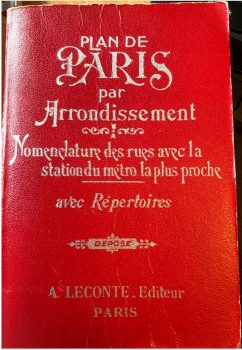French Vocabulary – Maps and Directions Posted by Tim Hildreth on Apr 2, 2019 in Vocabulary
While doing the research for my last post on le Grand Paris, I came across something that got me thinking about les points cardinaux (the cardinal points) and the words that we use in French to talk about north, south, east, and west.
Le monde est grand / The world is big
J’adore les cartes (I love maps). I don’t have much call to use actual maps anymore, thanks to my trusty portable (cell phone), but back in the day, getting around a new city pretty much required the use of a good plan (city map). Today you can use the built-in map function on your phone or télécharger (download) all sorts of apps to help you navigate.
Les points cardinaux / The points of the compass
Everyone knows to the right (à droite) and to the left (à gauche), but less common are the words for north (le nord), south (le sud), east (l’est), and west (l’ouest). Let’s look at these terms in use:
Le premier arrondissement est au centre de Paris. / The first arrondissement is in the center of Paris.
Le jardin du Luxembourg est au sud du premier arrondissement, dans le sixième arrondissement. / The Luxembourg gardens are to the south of the first arrondissement, in the sixth.
Le Bois de Boulogne est à l’ouest de Paris et le Bois de Vincennes est à l’est. / The Boulogne Park is to the west of Paris and the Vincennes Park is to the east.
La ville de Gentilly est au sud de Paris. / The city of Gentilly is south of Paris.
Le Sacré-Coeur est dans le nord de Paris. / The Sacré-Cœur is in the north of Paris.
Click this link to see a Google Maps view that corresponds to these directions.
Note that, while they can sometimes feel like adjectives, les points cardinaux are nouns and therefore do not get modified to agree with associated nouns. Which was that thing that caught my attention when I was researching le Grand Paris. I saw a description of la banlieue ouest (the western suburbs) and wondered for the first time in all these years I’ve been speaking French why it wasn’t la banlieue oueste … and now I – and you! – know.

Build vocabulary, practice pronunciation, and more with Transparent Language Online. Available anytime, anywhere, on any device.




